Are You New To Markethive? Do You Want To Start Accumulating Markethive Coin Before The Next Bull Run?

REFER THREE TO MARKETHIVE TO RECEIVE BONUS AIRDROPS AND ACTIVATE MICROPAYMENTS
Referral Program For Free Members And Upgraded Associates
As Markethive continues to gain traction with new members joining daily, Markethive is steadfast and in preparation to take a large share of the new Market Network that is the next generation following the social media craze of Web 2.0. Markethive is a Social Market Broadcasting Network. It sounds like a mouthful, and it is!
Markethive is an all-encompassing platform that has integrated;
- Social Media (like Facebook, LinkedIn),
- SAAS tools (like GoToMeeting, Aweber, Google Apps),
- Inbound Marketing (like Marketo, Hubspot),
- Commerce platforms (like eBay, Freelancers, Amazon)
- Digital Media (like Cointelegraph, Bitcoin.com).
As Markethive’s foundation is Blockchain-driven, it has its consumer coin, currently named Markethive Coin (MHV), but soon to be renamed Hivecoin (HVC – the Ticker Symbol). It is fully integrated into the system and has created an Ecosystem for all Markethive members, free and upgraded Entrepreneurs.
So Markethive has established its niche as the only Social Market Broadcasting Network with an infinity Airdrop and a system that rewards the users for engaging on the platform and learning how to use it with ongoing, real-time micropayments, otherwise known as a Faucet.
Markethive has the combined power of Facebook, LinkedIn, Marketo, and Amazon, with the real advantage of deriving income within the Markethive system while promoting your business and enjoying the social media interface.
What If You’re A Free Member?
If you’ve just signed up for Markethive, you will have received your airdrop of Markethive’s Hivecoin (HVC) to your CoinClip. (The airdrop is currently at 500 coins.)
The next thing to do is to refer just 3 of your friends or colleagues to Markethive, which unlocks the Micropayment Faucet, allowing you to receive lifetime rewards of HVC.
So a Free Membership in Markethive allows you to earn coins with every post, process, and function within the system and, like a faucet system, earn micropayments of Markethive Coin.
Remember, it is not just another payment service provider other Social Media platforms have adopted. You genuinely earn Hivecoin (HVC), and now is a perfect time to accumulate your coins.

Bonus!
Markethive will also reward you with a bonus of 250 HVC for the first three members you invite to join us. You will receive these coins to your coin clip as soon as they sign up and complete the verification process via SMS code.
Please note: To receive the maximum of 500 MHV bonus airdrop for all subsequent referrals (after the first three), you will need to upgrade to Entrepreneur One.
Markethive Wallet And Coin Exchanges
As the Markethive internal wallet is in the final stages of development, the next step is listing HVC on reputable coin exchanges and allocating an external wallet on the Solana Blockchain to Markethive members. You’ll be able to convert it into the currency of your choice or buy products and services within the Markethive ecosystem.
After the release of the wallet, Markethive will launch a new offshore company to build its own exchange. Simultaneously, the Markethive Multidimensional Wallet App will be on the table for development.
Markethive will roll out a schedule to deliver the wallets and administer them in tiers and stages led by the upgraded Entreprepreneurs as the first cab off the rank.

Thinking About Upgrading To Entrepreneur One?
Upgrading to Entrepreneur One provides many benefits and extra opportunities to monetize your activities and businesses, as defined in this article, and is predominantly an online cottage industry.
Furthermore, apart from the matching coin bonus of 500 MHV for each person you refer, you will have access to an advanced CMS control panel for your new "associate leads" found in the Friends section. You are essentially building your email list for your email autoresponder and broadcaster within the Markethive SaaS tools portfolio.
As an Entrepreneur One Upgrade, you are considered an early adopter of Markethive, so ILP shares (Incentivized Loan Program) are included in the net profit revenue of Markethive.
This is a unique opportunity to create a legacy and reap the rewards only venture capitalists could otherwise enjoy.
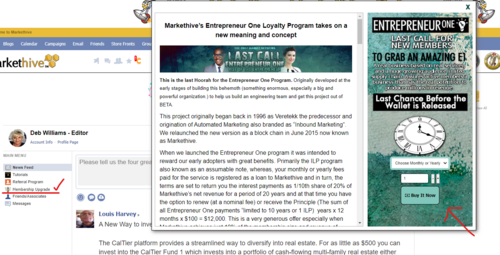
To upgrade to Entrepreneur One level, navigate to the home page and click on “Loyalty Programs” displayed in the menu. As displayed in the image above, a pop-up will appear where you will be prompted to follow the steps required.
You can have more than one subscription, which not only multiplies the assets you receive as an Entrepreneur One associate; you also have the opportunity to onsell the subscription through the upcoming ILP exchange. The Entrepreneur One upgrade will no longer be available from Markethive when the internal wallet is released.
The Entrepreneur One will become extremely valuable as we introduce more unique money machines, including the Press Release system and video advertising.
The Automated Referral Panel
Using your referral links via the automated referral panel is an easy way to promote Markethive to your friends and colleagues on other social media sites. This will also be incentivized with micropayments soon.
You will find the automated referral panel on the home page menu named Referral Program. You have two links, as shown in the image below.
1. The top one is the link to your Profile Page or Bio. As explained here, sharing this link is excellent for branding yourself or your business.

Share your unique Referral Link on your social network profile consistently and quickly receive a lot of referrals! Click on the Social Media buttons, and your Capture page referral link will automatically be included. An assortment of thumbnails (images) will rotate, giving your post a fresh new look every time you share.
The Capture Page
2. The second link is your Capture page which is incredibly informative with a video and bullet point explanations. It’s intuitive, simple, and captivating.
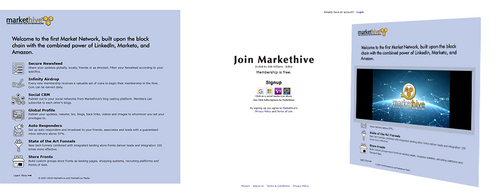
The Bottom Line
Bottom line, by joining Markethive, you will get a Market Network Inbound Marketing platform worth $2500 per month for free and get “Airdropped” paid up to 500 Markethive coins (HVC) just for joining.
By referring Markethive to three people only, you activate the micropayment faucet and continue to receive HVC coin payments for the duration of your life within the hive for all activities you perform on the Markethive Platform.
Since the entire system runs on the Markethive coin, (soon to be named Hivecoin), you can expect the volume demand and increased velocity of the MHV coin to drive coin value accordingly. This is one of the main reasons we refer to our system as a legitimate alternative to universal income, based on ethics and integrity, not government-mandated theft and graft.
Interestingly, the first Faucet invented was the Bitcoin faucet launched by Gavin Andresen, one of the earliest Bitcoin developers, in June 2010. At that time, Bitcoin was about 8 cents. It gave out 5 Bitcoins a day until 2011, when it ran out of coins.
Markethive has embraced this reward system and applied it to the many marketing and communications aspects within Markethive. The big what if is; in 10 years, will the Markethive coin have a similar rise in value? No doubt in my mind, given that HVC is a consumer coin with an actual use case, unlike so many other altcoins on the market. Time, technology, and the universal need for a holistic platform such as Markethive are on our side.
Although crypto is currently in an unprecedented bear market, with many companies collapsing, it is considered by industry experts as a catalyst for emerging genuine projects to flourish. This includes Markethive and its rise to prominence as a pioneer in the social media and marketing sector of the Blockchain and Cryptocurrency space.
With its comprehensive wallet and member merchant accounts nearing completion, we couldn’t have asked for better timing for Markethive to distinguish itself in the crypto market that is seeing companies rise and fall based on their true worth, as detailed in this article.

Meanwhile, get busy and refer three people to unlock the faucet and start accumulating HVC coins. You will enjoy the fruits of the Markethive ecosystem, which is Markethive’s vision for everyone and is destined to achieve.
To follow Markethive’s progress come to the meetings on Sundays at 10 am MST. The founders of Markethive, Thomas and Annette, present all the latest updates and developments. See and hear explanations, ask questions, and witness the ever-evolving technology and concepts of Markethive. The link to the meeting room is located in the Markethive Calendar. See you there.


Tim Moseley




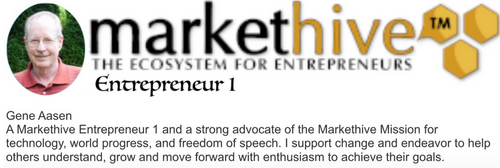


 Ex Google advertising chief: There is 'no limit' to tech companies mining your data – Sridhar Ramaswamy
Ex Google advertising chief: There is 'no limit' to tech companies mining your data – Sridhar Ramaswamy
.jpg)











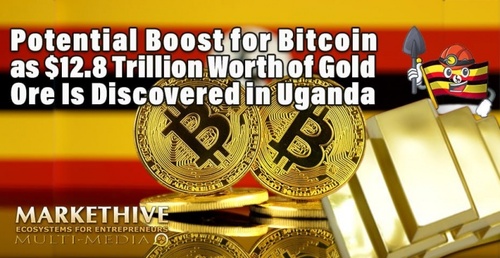
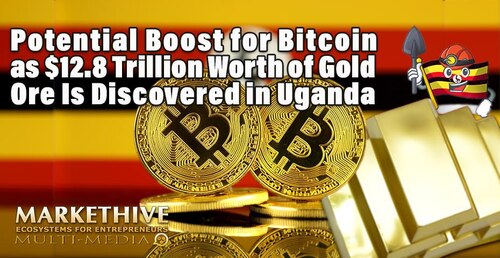
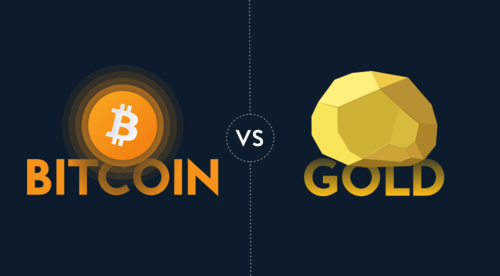
.gif)
